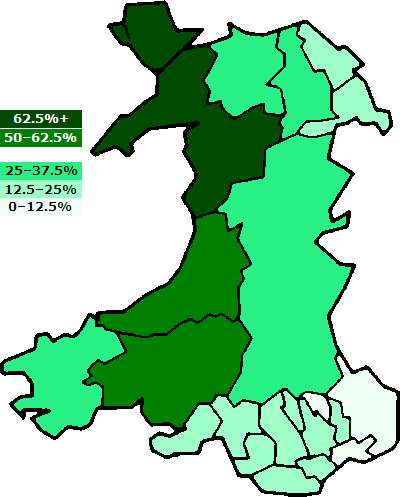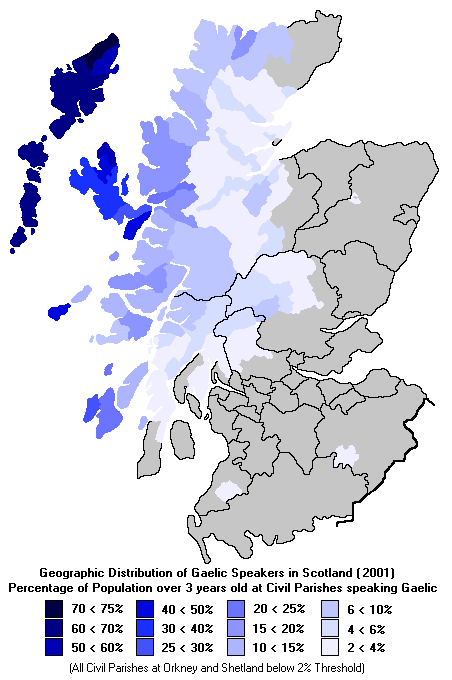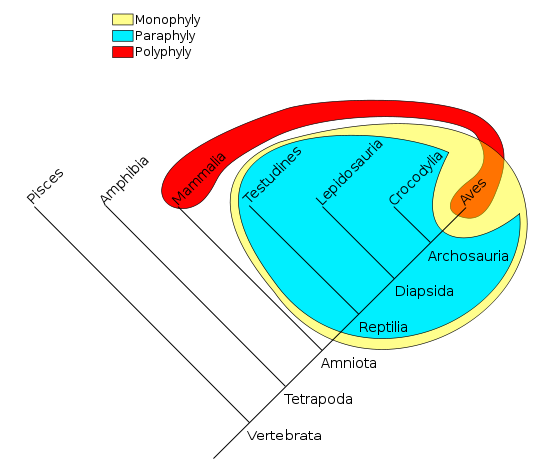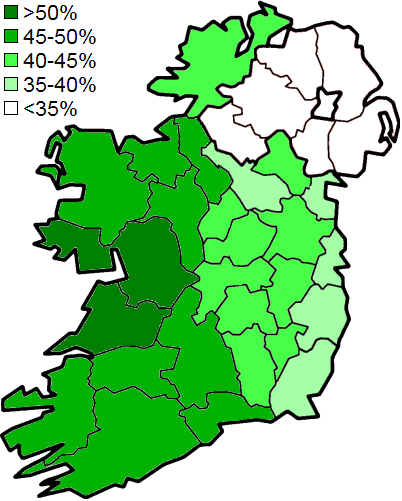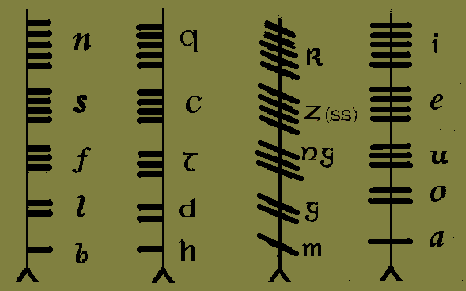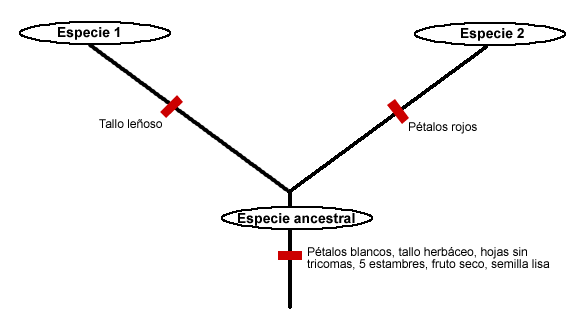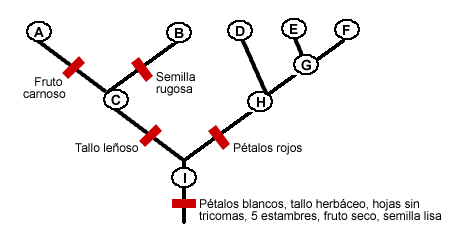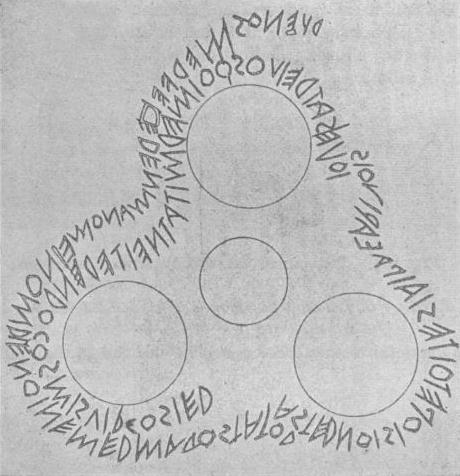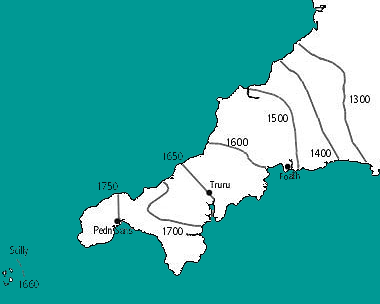El céltico insular es un subgrupo que comprende las lenguas célticas deGran Bretaña e Irlanda más el bretón, hablado en Bretaña (norte de Francia), cuyo origen es insular. En comparación con las lenguas célticas continentales, del céltico insular se tiene un conocimiento mucho más preciso. Aunque existen datos de estas lenguas que provienen de fuentes clásicas, como inscripciones en alfabeto latino y ogham desde finales del s.VIII al IV a. C. y topónimos principalmente, es a través de manuscritos en lengua irlandesa desde el s. VII d. C. y más tarde en lenguas británicas, de donde proviene una gran fuente de información con respecto al céltico insular.
A su vez, tiene dos ramas, proviniendo las lenguas de cada una de un antecesor común cuya distinción se habría producido alrededor del 1000 a. C.
Clasificación
Todas las lenguas celtas insulares descienden del proto-celta al igual que las lenguas celtas continentales (galo, lepóntico, celtíbero). El celta insular forma un grupo geográfico claro que se desarrolló íntegramente en las islas británicas (y sólo tardíamente el bretón pasó al continente). Por otra parte el celta continental es peor conocido ya que está extintos desde época romana. Existe cierta discusión sobre la relación entre el celta insular y el celta continental. Para algunos autores el celta insular de las islas británicas constituye un grupo filogenético o rama del celta que descendería de un proto-celta insular. Sin embargo otros autores consideran que el celta insular es sólo una clasificación geográfica y realmente no constituye por sí mismo una rama genuina del celta. Los autores se encuentran divididos en dos posiciones:
- Hipótesis del origen común: El celta insular es un grupo filogenético válido y sus características comunes se remontan a una lengua céltica uniforme que más tarde se fragmentó en proto-goidélico (Irlanda) y proto-britónico (Britania).
- Hipótesis del área lingüística: El celta insular no deriva de un celta más o menos uniforme sino que en tiempos de la llegada a las islas británicas ya existían diferencias entre el celta goidélico y el celta britónico. Los rasgos comunes entre ambos grupos podría haber sido consecuencia de una evolución convergente debida al contacto lingüístico entre ambos grupos.
Celta insular como grupo filogenético
La hiótesis del celta insular postula que las lenguas britónicas y goidélicas evolucionaron históricamente de un ancestro común más o menos uniforme que llegó a las islas británicas a diferencia de las lenguas celtas continentales que serían evoluciones independientes del celta insular.
Los autores de la hipótesis del celta insular como grupo filogenético (entre los cuales están Cowgill 1975; McCone 1991, 1992; y Schrijver 1995) señalan la existencia de innovaciones compartidas entre las lenguas celtas insulares que no están presentes en el celta continental. Entre estas innovaciones incluyen las preposiciones flexionadas, el uso compartido de ciertas partículas verbales, el orden básico VSO y la diferenciación entre formas absolutas y conjuntivas en las terminaciones verbales muy extendidas tanto en antiguo irlandés como en galés medio. Estos autores consideran que la evolución de la labiovelar a labial ( /*kʷ/ > /p/) compartida por las lenguas britónicas y el galo es secundaria y pudo producirse tardíamente en ambos grupos independientemente.
Celta insular como área lingüística
La hipótesis del área lingüística, rechaza que el celta insular proceda de una protolengua diferente del protocelta y por tanto de alguna manera considera que algunas lenguas celtas insulares filogenéticamente están más estrechamente emparentadas con el celta continental, que con el resto de lenguas celtas insulares. Por ejemplo comúnmente consideran que las lenguas britónicas tienen un origen más cercano al galo que a las lenguas goidélicas. Sin embargo, esta teoría necesita explicar los elementos comunes al celta insular, y en general se recurre al argumento de que son el resultado de un fenómeno de evolución convergente o de área lingüística.
De acuerdo con algunos defensores de esta hipótesis en el período post-romano se produjeron numerosos contactos y présamos léxicos entre las lenguas goidélicas y britónicas. Por ejemplo existe evidencia histórica de la presencia del irlandés antiguo en lo que actualmente es Gales e Inglaterra, y también existen evidencias de la presencia de hablantes britónicos en Irlanda durante el mismo período. Las evidencias arqueológicas también sugieren que existió un contacto sustancia entre Bretaña e Irlanda ya en tiempos prerromanos.
Ranko Matasović confeccionó una lista de los cambios que afectaron a las dos ramas del celta insular (aunque no hay evidencia de que se remonten a un antepasado común):1
- Cambios fonéticos
- Cambios morfológicos
- Creación de preposicione conjugadas (flexionadas)
- Pérdida del caso gramatical en los pronombres personales
- Creación de un grado equativo en el adjetivo
- Creación de formas particulares de imperfecto
- Creación del modo condicional
- Cambios morfosintácticos y sintáticos
- Fijación del orden básico en VSO
- Creación de artículos definidos proclíticos
- Creación de partículas para marcar la polaridad positiva o negativa de la oración
- Creación de construcciones perifrásticas comunes
- Creación de marcas de objeto
- Uso de núemros ordinales en el sentido de “uno de”.
_______________________………………………..===============================
Insular Celtic languages
| Insular Celtic languages | ||
|---|---|---|
| Geographical distribution: | British Isles and Brittany | |
| Countries: | ||
| Speakers: | ||
| Genetic connection: | Indo-European languages Celtic Languages insular Celtic |
|
| Subdivisions: | Goidelic languages Brythonic Languages |
|
| ISO 639-1 | – | |
| ISO 639-2 | ||
| ISO 639-3 | – | |
 Provinces of the Insular Celtic languages aa from the seventeenth century. Provinces of the Insular Celtic languages aa from the seventeenth century. |
||
|
||
The Insular Celtic is a subgroup comprising the Celtic languages of Britainand Ireland ‘s Breton, spoken in Brittany (northern France ), whose origin is insular. Compared with the Continental Celtic languages of insular Celtic you have a much more accurate knowledge. Although there are data that these languages come from classical sources, such as inscriptions in Latin alphabetand ogham from the late s. VIII to IV a. C. and place names mainly is through Irish language manuscripts from the s. VII d. C. and later in British languages, hence a great source of information regarding the Insular Celtic.
In turn, has two branches, languages coming each from a common ancestor whose distinction would have occurred around 1000 BC. C.
Classification
All insular Celtic languages are descended from Proto-Celtic like the Continental Celtic languages ( French , Lepontic , Celtiberian ). The Insular Celtic form a clear geographical group that developed entirely in the British Isles (and only belatedly Breton went to the mainland). Moreover the continental Celtic worse as it is known extinct since Roman times. There is some discussion about the relationship between Insular Celtic and Continental Celtic. For some authors the Insular Celtic British Isles is a phylogenetic group or branch of Celtic who descend from a proto-Celtic insular. However, other authors consider that the Insular Celtic is just a geographical classification and really not in itself a genuine branch of Celtic. The authors are divided into two positions:
- Hypothesis of common origin : The Insular Celtic is a valid phylogenetic group and its common features back to a uniform Celtic language which later fragmented into proto-Goidelic (Ireland) and proto-Brythonic (Britain).
- Hypothesis linguistic area : The Insular Celtic is not derived from a more or less uniform Celtic but in times of arrival in the British Isles and there were differences between the Goidelic and Brythonic Celtic Celtic. The common features between the two groups could have been the result of convergent evolution due to language contact between the two groups.
Insular Celtic as phylogenetic group
The hiótesis the Insular Celtic Brythonic and postulates that the Goidelic languages historically evolved from a common ancestor more or less uniform who came to the British Isles unlike the Continental Celtic languages would be independent evolutions of Insular Celtic.
The authors of the Insular Celtic hypothesis as phylogenetic group (among whom are Cowgill 1975; McCone 1991, 1992, and Schrijver 1995) indicate the existence of shared innovations among insular Celtic languages that are not present in the continental Celtic. These innovations include the inflected prepositions, the shared use of certain verbal particles, the basic order VSOand differentiation between absolute and conjunctive forms in widespread verb endings in both Old Irish and Middle Welsh . These authors consider the evolution of a labial labiovelar ( / * k / > / p / ) shared by the French and Brythonic languages is secondary and may occur late in both groups independently.
Insular Celtic as a linguistic area
The hypothesis of the linguistic area, rejects the Insular Celtic proto proceed differently from Proto and therefore somehow believes that some insular Celtic languages are phylogenetically more closely related to the continental Celtic, with the rest of insular Celtic languages. For example commonly considered the Brythonic languages are closer to the French than to Goidelic languages origin. However, this theory needs to explain the common elements Insular Celtic, and generally uses the argument that they are the result of a phenomenon of convergent evolution or linguistic area .
According to some proponents of this hypothesis in the post-Roman period and lexical présamos numerous contacts between the Goidelic and Brythonic languages occurred. For example there is historical evidence of the presence of the old Irish in what is now England and Wales, and also evidence of the presence of britónicos speakers in Ireland during the same period. Archaeological evidence also suggests that there was a contact between Britain and Ireland substance already in pre-Roman times.
Ranko Matasović compiled a list of the changes affected the two branches of the Insular Celtic (although there is no evidence to date back to a common ancestor): 1
- Phonetic changes
- The lenition of voiceless stops
- Certain vowel closures (i-Affection)
- Certain vowel openings (a-Affection)
- Apocopated
- Syncopation
- Morphological changes
- Creating conjugated Pre-position (bent)
- Loss of grammatical case in personal pronouns
- Creating a equativo degree adjective
- Creation of particular forms of imperfect
- Establishment of conditionally
- Morphosyntactic and sintáticos Changes
- Fixing the basic VSO order
- Creating proclitic definite articles
- Creating particles to make a positive or negative polarity of prayer
- Creating common periphrastic constructions
- Branding object
- Using ordinal nuemros in the sense of “one”.
Fuente:
